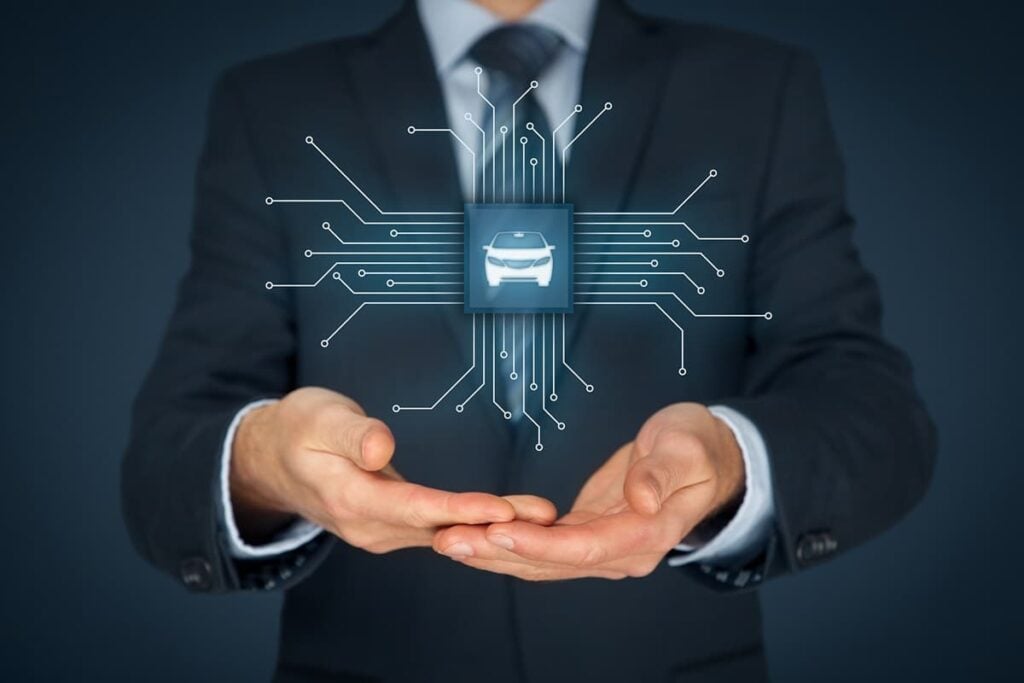Argo AI Enables Autonomous Vehicle Delivery for Walmart
Table of contents

History is full of great rivalries. Coke versus Pepsi. Star Trek versus Star Wars. Ali versus Frazier. Good versus Evil. The list goes on. One of the epic battles of our lifetime is Walmart (WMT) versus Amazon (AMZN). The two retail behemoths have been on a collision course for years, as they increasingly compete on the same turf. Amazon has shifted into brick-and-mortar with its acquisition of Whole Foods and opening of Amazon Go markets. Walmart is leaning heavily into e-commerce and digital with its own online marketplace and embrace of AI and robotics. The world’s biggest retailer is now putting the pedal to the metal with an autonomous vehicle delivery service using technology developed by a highly valued self-driving startup called Argo AI.
Walmart Drives Toward Automation
Our MBAs have been working overtime trying to cover all of the recent tech stock news that it’s probably a good idea to remember that most of our money remains tied up in “dividend growth investing” or DGI. The concept is pretty simple: Invest in companies that consistently increase dividends to stockholders rain or shine. One company that has increased its annual cash dividend every year since March 1974 is Walmart, so we’re always interested in what moves the giant retailer is making that will affect our ongoing stream of income. The recent announcement that Walmart would team with Argo AI and Ford (F) on an autonomous vehicle delivery service in three cities certainly caught our attention. Our first question: Is this a long-term strategy or publicity stunt?

The latest financial filings from Walmart with the Securities Exchange Commission don’t explicitly discuss Argo or robotic deliveries. However, the company appears laser-focused on building its delivery services. Last year, it launched its Walmart+ membership program that offers unlimited free delivery from stores, as well as fuel and prescription discounts, among other benefits. It rolled out NextDay Delivery to more than 75% of the U.S. population, launched Delivery Unlimited from 1,600 locations in the U.S., and expanded Same Day Pickup to nearly 3,200 locations, as of 2020.
Before we speculate on how Walmart might leverage autonomous vehicle delivery services as part of its master plan to defeat Amazon, let’s learn more about Argo AI.
Autonomous Vehicle Startup

Founded only five years ago, the Pittsburgh-based startup quickly established itself as one of the key companies in the self-driving race. It has amassed $3.6 billion from Ford and Volkswagen (VOW.DE), which each own a 40% stake in the company. In July, ride-hailing company Lyft (LYFT) invested an undisclosed amount of money as part of a collaboration to deploy a fleet of 1,000 robotic taxis. Argo is currently valued at $7.25 billion.
The company is developing its own self-driving system that has been integrated into the hybrid-electric Ford Escape and an all-electric van called Volkswagen ID Buzz AD. Argo has also developed its own LiDAR in-house, a technology that uses lasers to sense the environment around it. LiDAR has become a keystone tech in self-driving (despite Elon Musk calling it a fool’s errand), with a number of startups recently going public to seize the moment. Argo’s LiDAR has a range of more than 400 meters, with 360-degree rotation for full coverage. Here’s a very, very simplified explanation of how the whole self-driving system works:

On the software side is ArgoWatch, a cloud-based platform that monitors and manages all aspects of an autonomous vehicle fleet through a high-speed LTE connection (we assume 5G is coming?). In addition to managing routing and route planning, the platform monitors resources like fuel levels and battery charges. It also feeds updates to specific vehicles or the entire fleet about unexpected road closures, construction work, or even traffic backups spotted by on-board sensors. Argo currently has a fleet of self-driving test vehicles operating across six cities (Miami, Austin, Pittsburgh, Detroit, Palo Alto, and Washington DC) in the United States and will soon expand to two cities (Munich and Hamburg) in Germany. It also deploys a phantom fleet, using simulations to drive millions of virtual miles to learn and gather data.
Getting a Lift from Lyft
Earlier this year, Argo announced its first big contract to scale a fleet of 1,000 self-driving ride-hailing vehicles (you know, taxis) with Lyft, beginning in Miami and Austin. ArgoWatch will integrate directly with Lyft’s ride-hailing app, such as pre-positioning vehicles in high-demand areas, like outside concerts or sporting events, ensuring that vehicles are ready to pick up all those drunk people customers. Argo is also leveraging anonymized service and fleet data from Lyft to identify markets where self-driving cars could “most positively impact cities and individual community members,” as well as to continue to build its safety system by analyzing driving performance, accidents, fatalities, and all the dumb things humans do behind the wheel, in the cities where it intends to operate.

Argo then uses all that information to measure the performance of its self-driving system on specific streets, creating what it calls a “geonet,” or a network of streets, where it can operate its vehicle fleet without killing anybody. The last high-profile accident happened back in 2018 in Pittsburgh when two people ended up in the hospital.
Walmart and Autonomous Vehicle Delivery
Now Argo will unleash its self-driving vehicles on the streets of Austin, Miami, and Washington DC to deliver stuff to Walmart customers. As we noted earlier, Walmart is embracing automation in a big way, including robot-powered fulfillment centers from startup Alert Innovation. Not every attempt at automation has worked out: Last year, the retailer ended its use of shelf-scanning robots that roamed the aisles of its stores. Apparently, humans are cheaper and better in some cases.

The partnership with Argo is far from Walmart’s first foray into autonomous vehicle delivery. In 2019, the company announced a pilot program to deliver groceries using driverless robotic vehicles developed by Nuro, another multi-billion-dollar startup whose R2 unit is purpose-built for last-mile delivery service. In 2020, Walmart initiated another autonomous vehicle delivery service pilot program with Cruise, a standalone company owned by General Motors (GM) that has raised a staggering $13 billion – including a hefty $750 million investment by Walmart in April of this year.
John Furner, president and CEO of Walmart U.S., had this to say about his company’s big bet on Cruise and its all-electric, self-driving vehicles:
Over the years we’ve been doing a lot to learn more about the role autonomous vehicles can play in retail, and we’ve seen enough to know it’s no longer a question of if they’ll be scaled, but when. … The investment will aid our work toward developing a last mile delivery ecosystem that’s fast, low-cost and scalable.
So, yes, Walmart is very serious about self-driving technology and appears to be hedging its bets by investing in multiple solutions. It can also afford to play the long game.
Conclusion
We agree with Furner: It’s only a matter of time before self-driving vehicles hit the streets en masse. Few technologies today are attracting the kind of massive amounts of funding that have been poured in robotic cars. It’s almost become one of those “too big to fail” propositions where momentum and money will push the technology over the finish line. Walmart expects to ride some of the winners to the checkered flag.
Sign up to our newsletter to get more of our great research delivered straight to your inbox!
Nanalyze Weekly includes useful insights written by our team of underpaid MBAs, research on new disruptive technology stocks flying under the radar, and summaries of our recent research. Always 100% free.















And how many of these things do we want clogging our roads, just to deliver a latte? How many lattes does Starbucks sell each morning? Each latte clogging the streets that Real people pay for and need to use. We need a $2/ mile road tax to reduce frivolous utilization of ground based delivery robots. And a lesser tax for air based delivery. This is a dangerous rolling nightmare in the making.
That’s a good point. For the grocery delivery use case it might make sense. For delivering small purchases, maybe not so much. They tried using robots on the Berkeley campus for food/beverage deliveries and had to subsidize the whole thing because it was so much work for so little value add. Walking our fat asses over to Starbucks to buy that 1,300 calorie Crapaccino is probably just what the doctor ordered. Buying high-margin flavored water probably isn’t the best use of student loans either.